Ulvila 作者: 来源: 发布时间:2021-04-21
一、所属省或是州,具体位置,人口,面积
Ulvila is a town and municipality of Finland located in the province of Western Finland and is part of the Satakunta region. It is one of the six medieval cities of Finland, as well as the third oldest in the country.
It is located in the province of Western Finland and is part of the Satakunta region. The municipality has a population of 13,009 (31 January 2019) and covers an area of 422.51 square kilometres (163.13 sq mi) of which 21.82 km2 (8.42 sq mi) is water. The population density is 32.47 inhabitants per square kilometre (84.1/sq mi).
The municipality is unilingually Finnish. The medieval St. Olaf's Church is dedicated to St. Olaf, who also is portrayed in the arms of the municipality.
Population by native language
Finnish 98.9% (official)
Swedish 0.2%
Others 0.8%
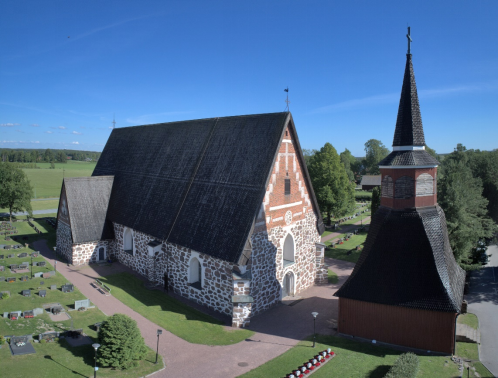
二、自然地理
1.地理条件
Ulvila is divided by Kokemäenjoki River. Overall, Ulvila is flat, its lowest point being 3 m MSL and the highest natural land formation 21 m MSL. However, the ridge between the depressions of Kokemäenjoki and Kaasmarkunjoki has been raised into a maximum height of 53 m MSL, just southwest of National Road 11. The settlement is centered on the Kokemäenjoki River, east of which is the older part (Vanhakylä), while on the west side lies the new city center (Friitala) as well as the Satakuntese Railway.
Though having a relatively dense habitation, Ulvila has many fields that are preserved for environmental effects.
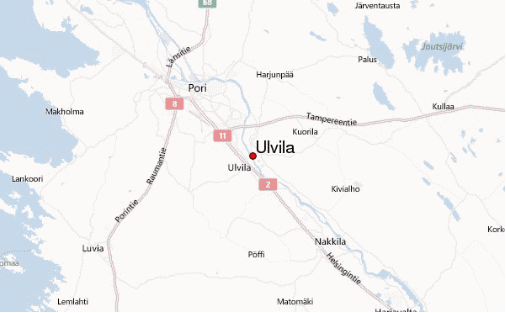
2. 交通情况
There are several ways to get around Ulvila town, such as taxi, bus, and boat.The 1860s built Leineperi bridge crossing the river Kullaanjoki in Ulvila, Finland.
The Tampere – Pori line, the highway 2 between Pori and Helsinki and the highway 11 between Pori and Tampere pass through Ulvila. Ulvila (Friitala) railway station (originally a pier) and the Haistila stop were among the original traffic locations on the Pori line. In the early years of the track's operation, Haistila had a lively loading port, from where timber imported by train from the hinterland was loaded onto barges for further transport to the Port of Mäntyluoto. After the displacement of road traffic, both traffic locations were closed: Haistila shutdown in 1974, Friitala station ten years later.
三、经济发展和规模
Some statistics on tax rates in Ulvila:
Income tax rate in 2020: 21,5%
Real estate tax rates in 2020: general 1.10%
permanent residential building tax: 0.55%
other residential building tax: 1.10%
non-profit organization tax: 0.00%
undeveloped construction site tax: 3.00%
四、产业特点重点项目
Ulvila's social structure has become service-intensive. The operation of the Friitala leather factory has already ceased. It has been replaced by the high-tech companies Cimcorp Oy, Neorem Magnets and the copper refineries of Luvata Pori Oy and Cupori Oy (formerly Outokumpu Oy) located on the Pori-Ulvila border, although on the Pori side.
Well-known companies in Ulvila include Cimcorp in the automation sector, Urho Tuominen Oy, a manufacturer of electrotechnical products, and its subsidiaries, Neorem Magnets, Satmatic, part of the Estonian Harju Elekter Group, Ulvilan Konepaja and the milk processing company Satamaito. The Friitala leather factory was a well-known leather processing company.
By production sector, Ulvila has the following jobs:
agriculture and forestry 3%
industry 31%
services 61%.
Ulvila’s economic strategy is a vision of how the city's operations should be developed in the near future. Strategic management is the conscious choice of direction in an ever-changing operating environment. By choosing the direction, the aim is to maintain and strengthen the vitality of the city in the long run. Strategy is an ongoing process that from time to time stops city actors from looking at the past, present, and especially the future.
The Finnish Environment Institute, or SYKE, is a multidisciplinary research and expert institute whose most important task is to solve society's most pressing environmental issues. In cooperation with SYKE and 8 other partners producing marine information, we built an online service that brings together all the information about Finnish marine research.
五、风景名胜,景点(attractions)
1. Leineperin Ruukki
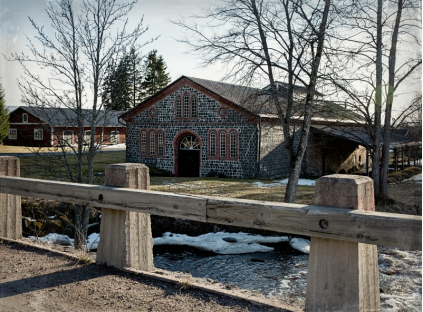
Leineperi Ironworks (Leineperin ruukki) is a historic village built around the ironworks in the 18th century. There are many of the old buildings still standing, i.e. iron warehouse, coal shed, roasting furnace, blast furnace, mill and Blacksmith Sacklén's house. In the summertime there are some shops and cafés open too. It's an idyllic village to visit.
Leineperi is located in the area of the former county of Western Finland, in the province of Satakunta, in the area of the former municipality of Kulla, about 20 kilometers east of the city of Pori and on the west coast of Finland. The village is located in the middle of the field openings, through which flows the Kullaanjoki, or at the village Leineperinjoki. The municipality of Kulla, where Leineperi was located, was incorporated into the city of Ulvila in 2005.
2. Juselius Mausoleum
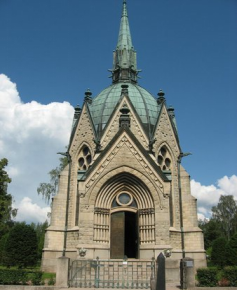
The mausoleum was built by local businessman Fritz Arthur Jusélius (1855–1930) for his daughter Sigrid (1887–1898) to be her last place of rest. Sigrid died of tuberculosis at the age of eleven. Her sarcophagus is placed in the basement of the mausoleum. It can be seen from the upper floor. The sarcophagus is made of white Italian marble and designed by architect Jarl Eklund.
3. Jalomäki closed yard
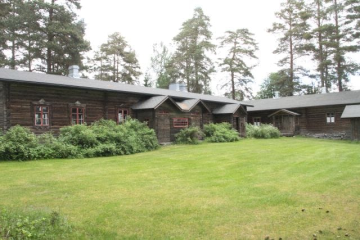
It's easier to tell what you can't find in the caches of Jalomäki's closed yard. This is one of Finland's most diverse sites presenting peasant culture. The Jalomäki closed yard in the village of Levanpello in Kullaa lives up to its name, as it has been made the most complete closed yard in Finland. The buildings of the farm have been moved to their current locations from all over Satakunta. The yard area is completely closed.
Now the third generation is responsible for Jalomäki's closed yard. It is Juho Kuusisto's turn. It all started when Juho's grandfather, Tauno Kuusisto, started building the Jalomäki closed yard. Enthusiasm caught up with Tauno's son Antti Kuusisto, who became one of the most famous collectors in our country.
Over the course of fifty years, the collections have accumulated at the pace that Antti Kuusisto's collections are the largest in Finland. During one visit, it is possible to see only a fraction of the treasures.
六、历史文化
1.历史
The city of Ulvila developed in the first half of the 14th century on the site of the old trading center. The citizens of Ulvila were referred to as city dwellers as early as 1344, but the Swedish king Albrecht of Mecklenburg Ulvila granted formal city rights only on February 7, 1365. Kokemäki's commercial rights were transferred to Ulvila in the 1940s. However, Ulvila's development stood in the way of the city not being granted the right to stack, which was a prerequisite for foreign trade. So trading could only be done with Stockholm and Turku. It was only at the end of the 15th century that Ulvila was granted free sailing rights, but its use remained limited due to the warlike unrest of the time.
The only medieval building in Ulvila, the Church of St. Olaf, was built on the current site in the 14th century. It is unclear whether today's church is this original church, since on the one hand dendrochronological studies date the church to the 1480s and on the other hand coins from the 14th century were found in the basic walls.
The Union Wars had already hit Ulvila's inhabitants hard, but the city received the fatal blow in 1550 when King Gustav I Wasa ordered the guarantors of Ulvila to move to the newly founded Helsinki. Citizens were given permission to return after a few years, but the city has never recovered from this blow. In 1558, the Duke of Finland and later King Johann founded the city of Pori seven kilometers closer to the coast at the mouth of the Kokemänenjoki.
In the 16th and 17th centuries, Ulvila was a rural area dominated by manors. Wars, famines and military service led to the orphanage of many farms. Nevertheless, the population increased from 350 in 1535 to 600 at the end of the 17th century. The growth accelerated after the end of the Great Northern War. Courtyards that fell to the crown because of unpaid taxes were bought as inheritance farms. These and the large farms began to set up small leases on the edges of their country, the residents of which developed a large part of today's arable land. The Lattomeri swamp meadows were also drained, which gained hundreds of hectares of new arable land. The population grew from 750 in 1750 to 3800 in 1855.
2. 文化
From the Neolithic period there are signs of habitation by hunters and sealers. Agricultural settlement began in the Bronze Age when the fertile lowlands were cultivated. These residents have left graves. The settlement was apparently fixed at that time and consisted of individual houses.
Settlement may have declined during the Iron Age. No tombs have been found in Ulvila from the first centuries of our era, so that the disappearance of the population for around a millennium cannot be excluded. During this time, the silting up of the sea bay at the time in Ulvila continued, and the Kokemänenjoki brought clayey earth into the area of today's villages Friitala and Vanhakylä, which, however, was apparently too viscous to be processed with the techniques of the time. The next known settlement was upstream in Kokemäki.
With the improvement of agricultural methods at the beginning of the second millennium, the settlement spread to Ulvila, where the village of Haistila first developed around the 13th century. Sometime between the 12th and 14th centuries, a trading post was established at the river mouth, which replaced the markets further up the river.
The first hiking school was founded in Ulvila in 1855, but the first elementary school only in 1880. The Provost Stenbäck had already founded a lending library in 1865. The other innovations of the time also found their way into Ulvila: the volunteer fire brigade Kaasmarkku was founded in 1898 and a youth club in Ulvila in 1906. Apparently because of the strength of the labor movement, the youth association's activity remained low until the civil war.
七、其他信息
In the 18th century an ironworks was founded in Leineperi, which refined sump ore to wrought iron and produced the lime required for mortar. A community of its own was created around the hut in Leineperi.
The transition to modern society gradually improved the living conditions of the people. From the 1880s onwards, agriculture was systematically operated as an economy, and cooperative mills and dairy farms were founded. In 1892 the 18-year-old Arthur Hellman (born July 20, 1874 in Huittinen, † 1937) founded the Friitala leather factory, which was continued after his death by his sons Artturi and Arvi Hellemaa [3], which incorporated the village of Friitila into one industrial community changed. In 1895 the railway line from Tampere to Pori was completed with stops in Friitala and Haistila. It is characteristic of contemporary transport methods that Haistila served as the terminus for goods transport, from where the goods were loaded onto barges for river transport to the port. The river was also used to raft wood from the end of the 19th century to the 1960s.
In the municipal reform in 1865, the administration of the parish and the political community was separated. The first community meeting was held in 1868. The workers and smallholder farmers did not have a say here because the voting rights were based on tax payments and real estate. Ulvila was one of the most industrialized areas in Finland at the time: almost 30 percent of the population worked in industry. Accordingly, the labor movement received a strong position in Ulvila from the beginning.
八、联系方式
Service Manager: Katri Helander
Website: https://www.ulvila.fi/
Phone number: (02) 677 4511
Email: kirjaamo@ulvila.fi
